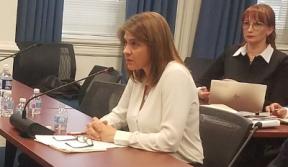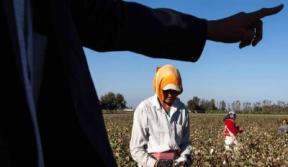One of the horrified passersby who witnessed this scene was another Rose, Rose Schneiderman. An immigrant like Rosie, Rose taught herself English while working in a sweatshop then began a life as an organizer for the International Ladies Garment Workers Union. She joined forces with the social reformer Frances Perkins (both are pictured in the eighth panel with the fire in the background), to press for the work protections we have come until recently to take for granted—limits on the length of the work week, restrictions on child labor, minimum wage, worker’s compensation, rules to assure a safe and healthful work environment. It was Rose Schneiderman who said, “What the woman who labors wants is the right to live, not simply exist. . . . The worker must have bread, but she must have roses, too.”
But exploitation and struggle are not the whole of the story. If you’ve ever heard someone, perhaps a family member, talk about their work in a mill or garment factory, you know about the bonds that formed between workers, the pleasures of friendship and the satisfaction of pulling together to accomplish the task at hand. Out of this organic solidarity grew the strength of the unions through which the workers won themselves a better life. Veterans of the factories also talk about the pride they took in their craft—cutting the pattern quickly and precisely, stitching the perfect button hole, attaching the collar without a wrinkle to the Hathaway shirt.
The factories have largely disappeared from Maine, migrating to countries where once again young women toil in sweatshops for wages that cannot sustain them, stitching the clothes we put on for work in the morning—if we have work to go to in the morning. The last panel of the History of Maine Labor mural questions what the future will hold for the people of our state. An older worker is ready to pass on the skills of his craft, but a young man and woman look doubtful that those skills will be viable in their lives.
How does Maine move forward to a future of bread and roses? I take from the past a sense of what is necessary to get us there: imagination, education, honest work, pride in craft, solidarity, the open exchange of ideas. A participatory democracy in which active citizens contribute to the institutions of a responsive government.
This is the story Judy Taylor’s mural tells me. It is not the story Governor LePage reads into it, preferring to white out our stories rather than learn from them. It is telling that the governor avoids the word “worker,” preferring to use the word “employee.” Employees exist to serve employers, whereas workers have rights and aspirations of their own. This lack of concern for lives of the working people of Maine is playing out in the administration’s legislative agenda, which would reverse the hard-won gains of the last century. Perhaps this is why the governor removed the mural—if he looked he might see in it the ruinous working conditions his policies would help revive. But the mural belongs to us and we will write its story, we are writing it together as we stand here in our State House in our Hall of Flags and as we continue to stand up for the working people of our state.

